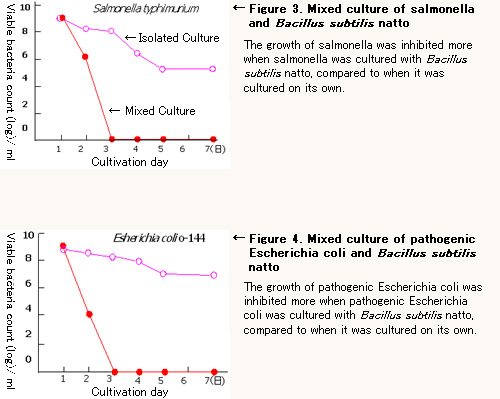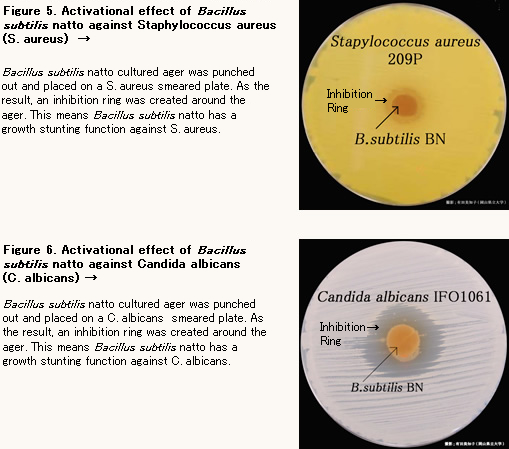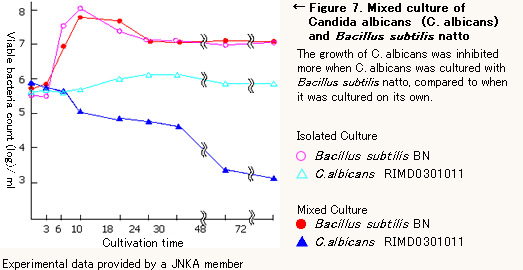What is Bacillus subtilis natto?
Bacillus Subtilis Natto
Bacillus subtilis natto (Figure 1 & 2) was found by Dr. Sawamura in 1906 and named Bacillus natto Sawamura. Since then it obtained the approvals for the manufacture of drug medicine in 1968, for animal drug in 1990, and for dietary additive in 1996, and it is now attracting attention as it has lately started being used for health food. Bacillus subtilis natto is a type of bacteria that produces salt-free fermented soy food such as Japanese traditional sticky natto, Kinema from Nepal and Thuanao from Thailand. It is one sort of Bacillus subtilis, not an indigenous intestinal bacteria in a strict sense, and it has endospore and is the most stable kind of fungus in nature Bacillus subtilis natto gets activated and strengthen beneficial intestinal flora (e.g.: bifidobacteria, lactic acid bacterium) which all animals intrinsically carry through making an appearance of various sorts of physiological effects.

Functions of Bacillus subtilis natto
1. Increase of beneficial bacteria
2. Inhibition of harmful intestinal bacteria
3. Producing a proper balance of intestinal flora by the functions above
4. Producing strong protein degradation enzymes and starch degradation enzymes
5. Elaborating B-complex vitamins abundantly
Intake of Bacillus subtilis natto
Recommended intake of Bacillus subtilis natto is 7.5×108/ day. This amount is set considering its safety (*), the economic efficiency and actual results of usage. (*) The safety was confirmed by promoting multiplication of lactic acid bacterium by mixed culture; the effect of inhibition of harmful intestinal bacteria and pathogen growth; and repeated oral administration for toxicity assay in rats.
Experimental Report of Bacillus subtilis natto
- Growth stunting action of Bacillus subtilis natto against animal-derived pathogen

- Antibacterial activity of Bacillus subtilis natto

- Experiment of mixed culture of Bacillus subtilis natto and Candida albicans by repeated flux cultivation

